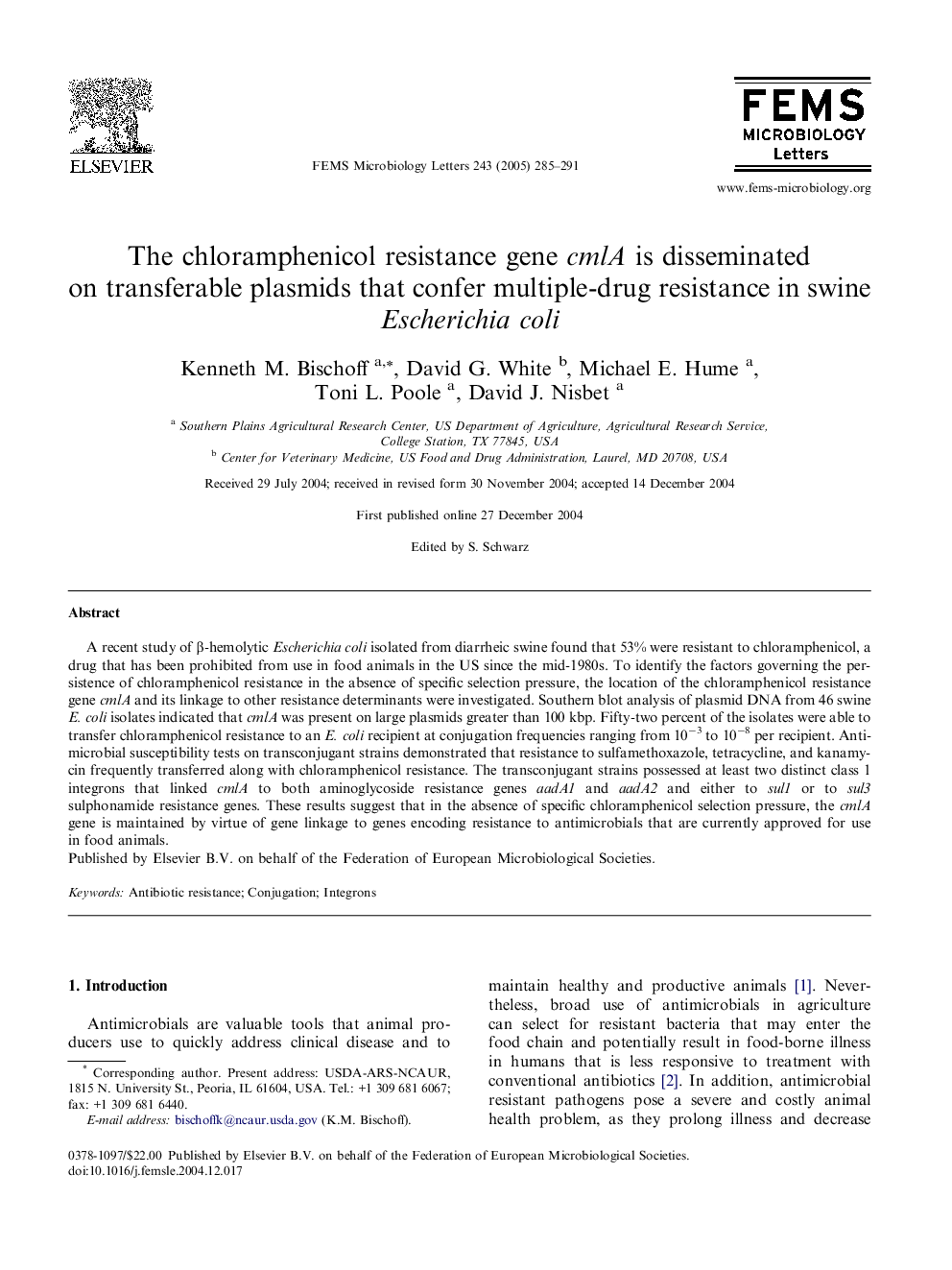| Article ID | Journal | Published Year | Pages | File Type |
|---|---|---|---|---|
| 9122131 | FEMS Microbiology Letters | 2005 | 7 Pages |
Abstract
A recent study of β-hemolytic Escherichia coli isolated from diarrheic swine found that 53% were resistant to chloramphenicol, a drug that has been prohibited from use in food animals in the US since the mid-1980s. To identify the factors governing the persistence of chloramphenicol resistance in the absence of specific selection pressure, the location of the chloramphenicol resistance gene cmlA and its linkage to other resistance determinants were investigated. Southern blot analysis of plasmid DNA from 46 swine E. coli isolates indicated that cmlA was present on large plasmids greater than 100 kbp. Fifty-two percent of the isolates were able to transfer chloramphenicol resistance to an E. coli recipient at conjugation frequencies ranging from 10â3 to 10â8 per recipient. Antimicrobial susceptibility tests on transconjugant strains demonstrated that resistance to sulfamethoxazole, tetracycline, and kanamycin frequently transferred along with chloramphenicol resistance. The transconjugant strains possessed at least two distinct class 1 integrons that linked cmlA to both aminoglycoside resistance genes aadA1 and aadA2 and either to sul1 or to sul3 sulphonamide resistance genes. These results suggest that in the absence of specific chloramphenicol selection pressure, the cmlA gene is maintained by virtue of gene linkage to genes encoding resistance to antimicrobials that are currently approved for use in food animals.
Related Topics
Life Sciences
Biochemistry, Genetics and Molecular Biology
Genetics
Authors
Kenneth M. Bischoff, David G. White, Michael E. Hume, Toni L. Poole, David J. Nisbet,
